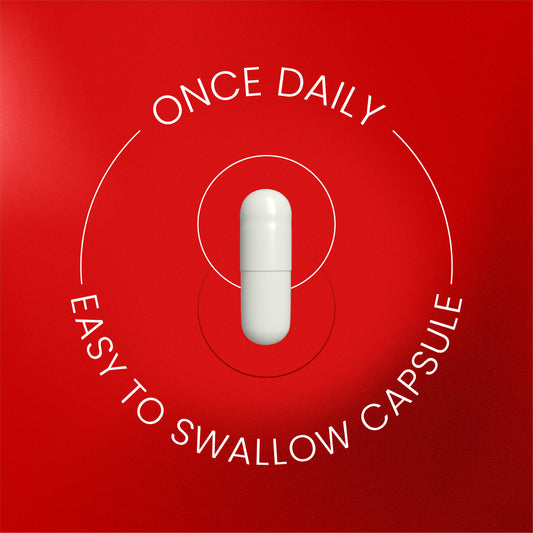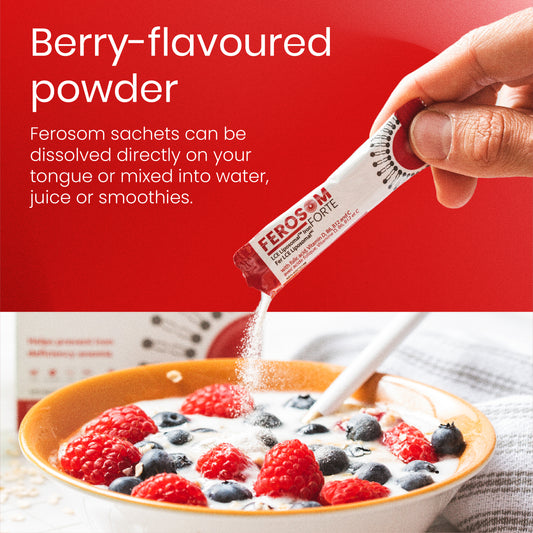

Perimenopause—the beginning of a beautiful goodbye to your reproductive years. It’s a time of transition in every woman’s life, when your ovaries gradually produce fewer hormones, causing all sorts of shifts throughout your body.
While countless changes can occur during this time—both fascinating and frustrating—one that often goes unnoticed is iron deficiency.
Let’s explore the connection between perimenopause and iron deficiency, the symptoms to watch out for, and how to boost your iron levels throughout menopause and beyond.
What is perimenopause?
Perimenopause is the period before menopause. Think of it as a friendly heads-up from your body that menopause is approaching. Your body starts producing less estrogen, causing symptoms like hot flashes, vaginal dryness, and most notably, irregular periods.
Every woman experiences perimenopause differently. It can last anywhere from a few months to 8 years. Some people start perimenopause in their 30s, others in their 50s. Case in point: There is no “right way” that perimenopause happens. The most important thing is to take care of your health and wellbeing as much as possible when it does.
Once you have gone a full 12 months without having a period, you’ve officially moved from the perimenopause stage into menopause.
What are the causes of iron deficiency in perimenopausal women?
Imagine the least fun roller coaster you’ve ever been on. That’s what your hormones are like during perimenopause. Your estrogen and progesterone levels start fluctuating constantly, preparing your body to stop its menstrual cycle. This can cause irregular periods and heavy menstrual bleeding.
Naturally, the more blood lost per month, the more iron is lost with it. That’s why so many perimenopausal women experience depleted iron stores and iron deficiency.
What are the symptoms of perimenopausal iron deficiency?
Iron deficiency can show up in many different ways for perimenopausal women—some physical, some emotional. The most common symptoms of perimenopausal iron deficiency are:
- Extreme fatigue
- Apathy
- Irritability
- Memory loss
- Depression
- Inability to focus
Some studies suggest that low iron is also associated with hot flashes—an infamous symptom of perimenopause and menopause.
Many women might experience symptoms of iron deficiency that aren’t necessarily associated with perimenopause, such as:
- Pale skin
- Cold hands or feet
- Shortness of breath
- Rapid heart rate
- Headaches
- Dizziness
If you’re in perimenopause and experiencing any of the above, talk to your doctor about testing for iron deficiency or anemia. You can then formulate a treatment plan to boost your iron through diet or high-quality iron supplements.
How can women manage perimenopause iron deficiency?
Finding ways to manage your iron levels during perimenopause is crucial. It protects your overall health, so your body can stay supported during this time of major change.
Diet is typically the first step to boosting your iron. Foods high in iron include:
- Red meat
- Dark leafy greens, like spinach
- Beans and other legumes
- Nuts and seeds
- Tofu
- Dried fruits
- Iron-fortified cereals and breads
Since the highest levels of iron are usually found in meat, vegetarians or vegans may struggle to get enough iron from their diet. Try pairing iron-rich foods with sources of vitamin C, like citrus fruits or bell peppers, to enhance iron absorption.
And if eating iron-rich foods just isn’t working for you, there’s another, more convenient option: iron supplements.
What is the best iron supplement for perimenopause iron deficiency?
Iron supplements get a bad rap. They’re known for being harsh on the body and causing awful gastrointestinal side effects. But there are iron supplements that give you all the iron you could need—with none of the nausea, diarrhea, or bloating that comes along with regular iron supplements.
Enter: Liposomal iron supplements. Liposomal technology encapsulates the iron within a protective layer. This makes it easier for the iron to avoid stomach acid breakdown and be absorbed into the small intestine. In fact, the absorption rates of Liposomal iron are similar to certain doses of IV iron. (Psst. You can learn all about Liposomal iron right here.)
Ferosom Forte is a Liposomal iron supplement with the highest absorption rate on the market—and the fewest side effects. In fact, 88% of Ferosom Forte customers did not experience any side effects. Available in both capsule and sachet form, Ferosom Forte is an effective solution for those who struggle with perimenopausal iron deficiency. It’s even formulated with vitamin C to boost absorption even more.

Make the perimenopause journey as seamless as possible.
There’s no dancing around it—perimenopause can be a time of great confusion, uncertainty, and frustration. But it can also be a time of gratitude, appreciation for your incredibly strong body, and maybe even a little laughter as you navigate new symptoms.
Whatever your perimenopause journey looks like, iron deficiency doesn’t need to be part of the picture. Talk to your doctor about how Ferosom Forte can keep your iron levels high and healthy, so you can take this transition in stride.





